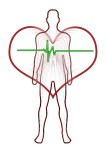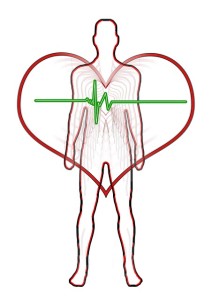When the body is in a state of homeostasis, the precise amount of hormones are released into the bloodstream and things proceed smoothly. But when the control system malfunctions-either too much or too little of a particular hormone is secreted, or when an organ or a tissue does not respond efficiently – the results can be severe and can result in numerous health conditions including, but not limited to, thyroid disorders, diabetes, osteoporosis, and depression. Thyroid disorders are either classified as “hypo-thyroid” meaning too little thyroid activity or “hyper-thyroid” meaning too much thyroid activity. At any given time in the U.S. more than twenty million people suffer from a thyroid disorder, More than ten million women have a low grade thyroid imbalance and nearly eight million people with the imbalance remain un-diagnosed. More than 500,000 new cases of thyroid imbalance occur each year.
15.7 Million Americans have diabetes and it is estimated that 5 million of them are undiagnosed. Each year there are 789,000 new cases of diabetes. diabetes is the 7th leading cause of death in the U.S. and total direct and indirect costs of diabetes in the U.S is over 100 billion dollars.
The endocrine pancreas is regulated by hormonal activity controlled by the hypothalamus. The dysfunction of the regulation of islet hormone secretion as well as its mechanisms and the pathophysiology of the islet dysfunction is primarily a breakdown in the neuroendocrine control.
Osteoporosis is a major health threat for 28 million Americans, 80% of which are women. Annual treatment costs for osteoporosis exceeds 15 billion dollars. One out of every two women and one in eight men will have an osteoporosis-related fracture at some time in their life.
“Interference with bone remodeling-that is, the imbalance between bone formation and bone reabsorption-underlies nearly every disease that influences the skeleton. Most such disorders are caused by imbalances in hormones and related chemicals in the blood.”
“The key to stopping osteoporosis lies in a balanced body chemistry and a delicate balance of minerals in order to maintain a calcium homeostasis in the blood”
Depression is on pace to be the world’s second most disabling disease (after heart disease) by the year 2000; already the World Health Organization ranks it first among women and fourth overall. In the United States, depression afflicts 18 million people at any given time, one in five over the course of a lifetime and costs over 40 billion dollars a year in lost work time and health care.
The term “depression” often carries a stigmatism with it that denotes a certain sort of sadness, but research has revealed that the majority of the cases of clinical depression are due to imbalances in hormonal levels and are related to a dysfunction in neurological signaling and chemistry.
“Today, neuroscientists know that in many cases, psychopathology (ie depression) arises because of dysfunctions in particular brain structures or particular brain chemicals”
“In fact, it takes an incredibly strong person to bear the burden of the depression condition. The name, “hypothalmo-pituitary-adrenal-axis dysfunction” an appropriate jargony medical description that is accurate but would never make it into the headlines”
Traditional Approach to Hormonal Health
The medical approach to endocrine disorders and hormonal imbalances is to use a variety of drugs in an attempt to artificially compensate for a hormone deficiency. In the case of an overactive gland, radiation and surgical procedures are used. Drugs and related synthetic chemicals may be necessary and appropriate in certain situations, but they do little to correct the cause of the disorder or imbalance since they can do nothing to correct the original cause of the problem, which is often in the system of the control mechanism. Drugs often create an even greater chemical imbalance, which can result in harsh side effects that are much worse than the original condition.
“Too many medical remedies get in the way of the body’s ability to heal itself”…
Article originally posted at ICPA.org.

